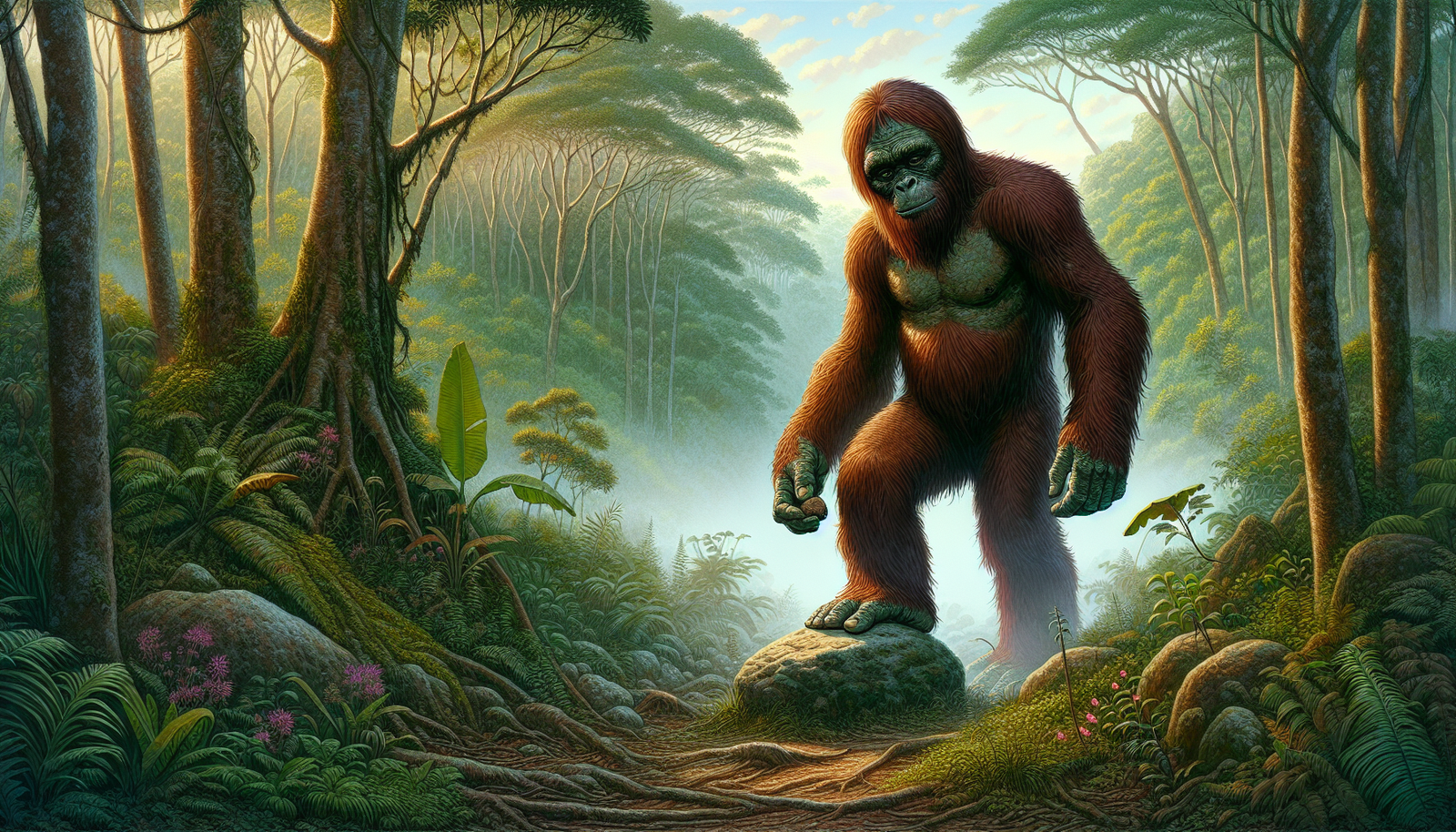Jungle Giants: Vietnam's Rock Apes

By Jack Sullivan, Bigfoot Researcher
Introduction
The dense jungles of Vietnam during the war were not only filled with enemy combatants but also home to mysterious creatures known as the Rock Apes. As a soldier on patrol in those perilous environments, you never knew what you might encounter next—the Viet Cong or one of these elusive humanoid beasts. The Rock Apes phenomenon has captured my imagination since I first heard whispers of these bipedal, hairy giants as a child. Now, I want to unravel the mystery and explore the origins, encounters, and theories surrounding Vietnam's cryptic jungle dwellers.
The Rock Apes Phenomenon
The Rock Apes, also called Batutut or Nguoi Rung ("jungle people" in Vietnamese), have been described by witnesses as muscular, six-foot-tall hairy humanoids that inhabit the remote highland jungles of Vietnam. Unlike the reclusive nature of North America's Bigfoot, these creatures are said to be aggressive—hence their name, earned by their tendency to hurl rocks at unwanted intruders.
The Rock Apes hold a unique place in Vietnamese folklore, with some believing they possess mystical powers and the ability to start fires. But once American GIs ventured into their domain, they transformed from elusive jungle spirits to hostile protectors of their territory. For the unprepared soldier, an encounter could mean the difference between life and death.
Encounters During the Vietnam War
Some of the most dramatic accounts of the Rock Apes come from the men who saw them firsthand. In one incident, a unit from the 101st Airborne Division was taking a break when violent shaking in the nearby trees revealed one of the creatures. After glaring at the men, it retreated back into the jungle. Another notorious encounter occurred on Hill 868, where a troop of Rock Apes engaged in an intense rock-hurling battle with the Marines after the men were told not to fire their weapons.
The North Vietnamese and Viet Cong also reported run-ins with these mysterious attackers. Their existence was significant enough that the North Vietnamese Army organized expeditions to hunt them down, though they always returned empty-handed. For those fighting in the war, the Rock Apes were a hazard as real as any human foe.
Scientific Expeditions and Theories
The consistent sightings of the Rock Apes compelled scientists like Dr. John MacKinnon and Professor Vo Quy to venture into the Vietnamese highlands in search of evidence. Though they never saw a live specimen, both men discovered and analyzed footprints that did not match any known animal. However, these findings failed to convince skeptics.
Numerous theories have emerged about what the Rock Apes could be. Some believe they were misidentified local wildlife like gibbons or the extinct giant orangutans that once inhabited Vietnam. Others posit that they are an unclassified ape species still unknown to science. However, many skeptics point to hallucinations caused by the stress and drug use among soldiers as the most plausible explanation.
The Cultural Impact of Rock Apes
Whether real or imagined, the Rock Apes left an indelible mark on the war. To the men who witnessed them, they represented the horrors and mysteries of the jungle, a reminder of the unknown dangers that lurked beyond the next tree. They've become ingrained in Vietnam War lore, symbolic of the primal terror felt by troops in an unfamiliar land.
For cryptozoologists, the consistent sightings are a tantalizing hint that an undiscovered ape could still dwell in the region. Enthusiasts continue to study the folklore and alleged encounters, hoping to shed light on this enduring mystery. The Rock Apes represent a profound intersection between war, culture, and zoology.
The Enduring Mystery
Despite decades of speculation, the Rock Apes remain an enigma due to the lack of physical proof. With no photographic evidence or specimens, confirming their existence is a challenge. However, as technology improves and more exploration is conducted, there is always potential for new biological discoveries that could substantiate the claims made about these elusive jungle giants.
For now, the Rock Apes stand alongside the multitude of unsolved mysteries that compel our imagination. Their legend not only reveals the hidden aspects of Vietnam's biodiversity but also symbolizes war's unsettling impact on the human psyche. While the truth may remain veiled in the misty jungle canopy, the lure of the unknown continues to drive our spirit of adventure.
Conclusion
In the realm of cryptozoology and wartime lore, the Rock Apes of Vietnam hold a special place. Their legacy has shaped historical accounts and cultural narratives, while also contributing to scientific curiosity. As someone who has long been fascinated by the possibility of their existence, I believe the reports of soldiers and locals should not be readily dismissed. The dense jungles of our world may still hold secrets, and there are discoveries yet to be made that could confirm the reality of these elusive man-apes. Though the evidence remains limited, the story of the Rock Apes endures as a testament to nature's uncharted frontiers. For me, the search for answers is just as meaningful as the answers themselves.
From Bigfoot to UFOs: Hangar 1 Publishing Has You Covered!
Explore Untold Stories: Venture into the world of UFOs, cryptids, Bigfoot, and beyond. Every story is a journey into the extraordinary.
Immersive Book Technology: Experience real videos, sights, and sounds within our books. Its not just reading; its an adventure.



























